Acromyrmex versicolor - Desert Leafcutter Ants
Watching Leafcutter Ants in the Arizona Desert
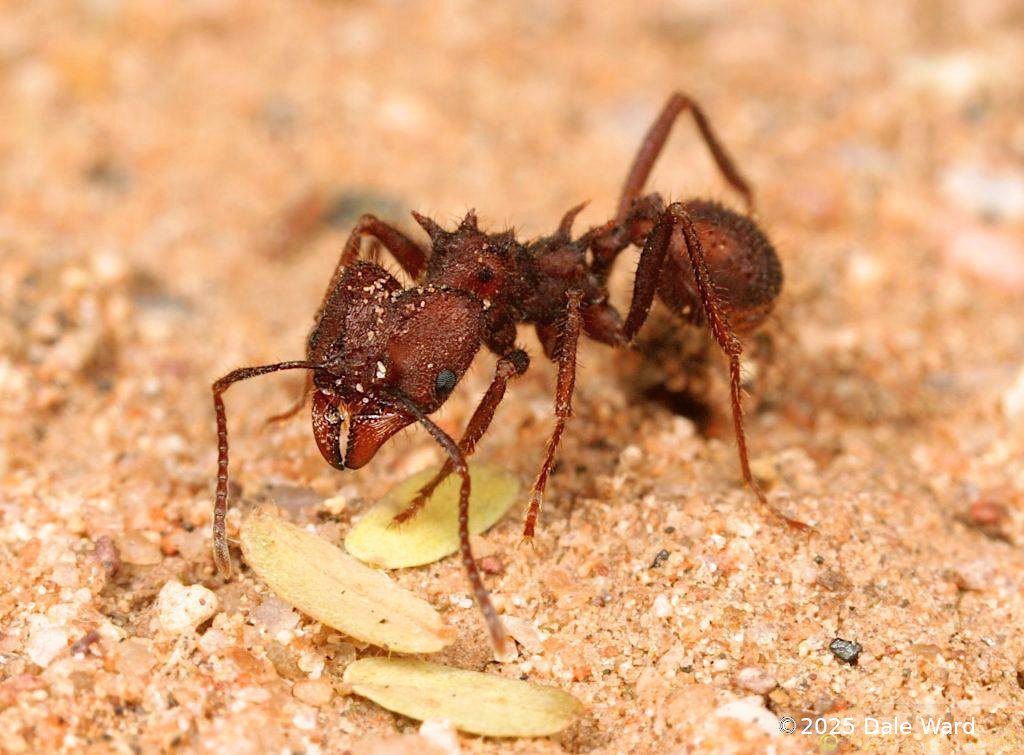 _Acromyrmex versicolor_ worker and mesquite leaflets
_Acromyrmex versicolor_ worker and mesquite leaflets
It’s funny. For the first four or five years that I lived in Arizona, I had no clue that we had Leafcutter Ants.
Then, after seeing the first nest, it was as if they were everywhere. Come to find out, they are pretty common - and I think that they are also one of the most enjoyable ants to watch.
Desert Leafcutter ants - Acromyrmex versicolor - are very, very cool. They often form long columns of ants entering and leaving the nests, with the ants carrying strangely shaped and colored parasols of vegetation. Sometimes you can’t even see the ants, but you can see the fragments of twigs, leaves and flowers making their way to the nest seemingly on their own It’s like watching a confetti marching.
The ants don’t eat the leaves and twigs that they bring back to the nest themselves, though. Rather, they feed the leaves to a garden of fungi that the ants grow inside of their nests. The ants eat the fungus. It’s agriculture.
The ant nests seem most common in sandy soil, either in desert washes or underneath shady trees. The nests are distinctive - they look like cartoon drawings of volcanoes. It’s common to find a number of these nest mounds very near to each other. I’m not sure if the these mounds are all entrances into the same nest, or if they are separate nests. I suspect that they are usually separate entrances to the same nest.
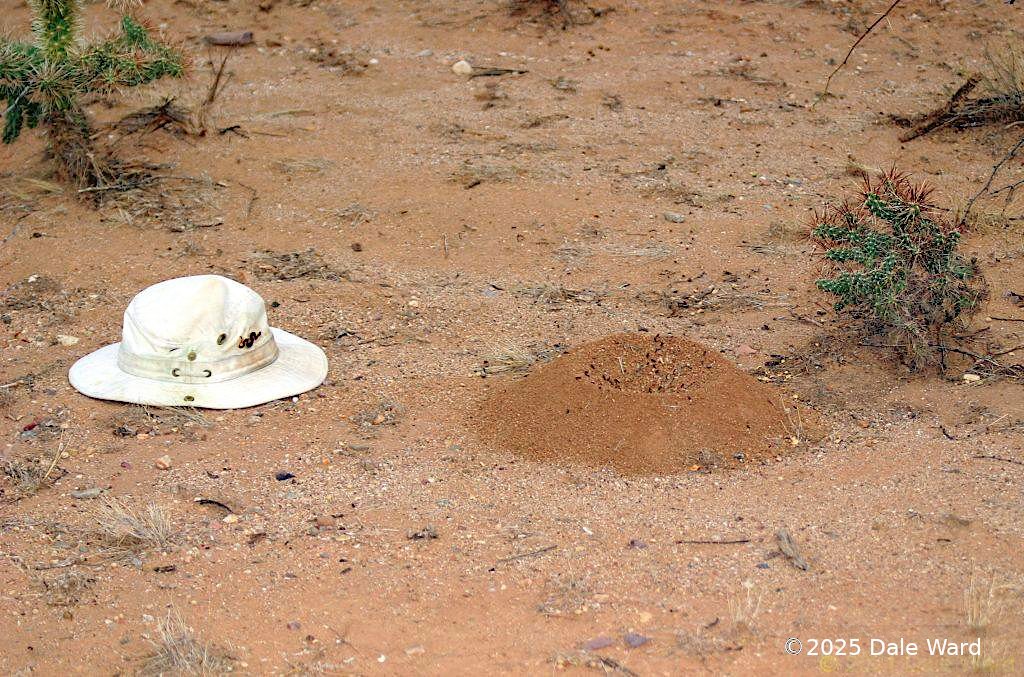 _Acromyrmex versicolor_ nest mound in a sandy wash, with hat for scale. If you look carefully, you can see the workers inside the ‘volcano cone’ of the nest mound.
_Acromyrmex versicolor_ nest mound in a sandy wash, with hat for scale. If you look carefully, you can see the workers inside the ‘volcano cone’ of the nest mound.
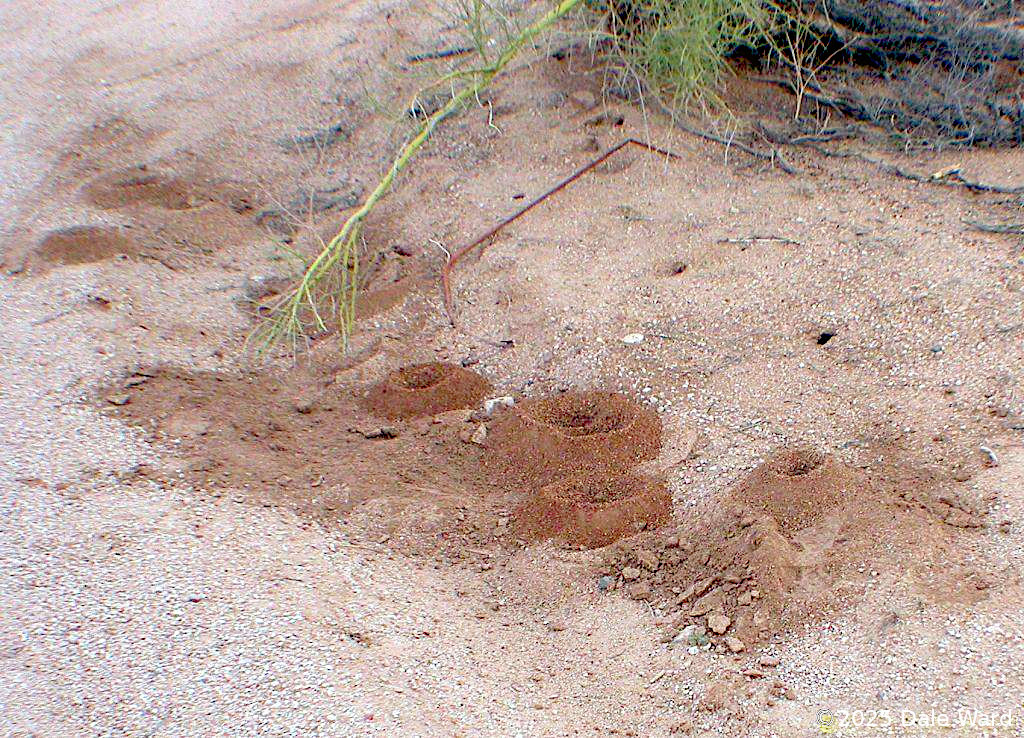 Series of _Acromyrmex versicolor_ nest mounds. I suspect that these are all entrances to the same nest - but I do not know that for sure.
Series of _Acromyrmex versicolor_ nest mounds. I suspect that these are all entrances to the same nest - but I do not know that for sure.
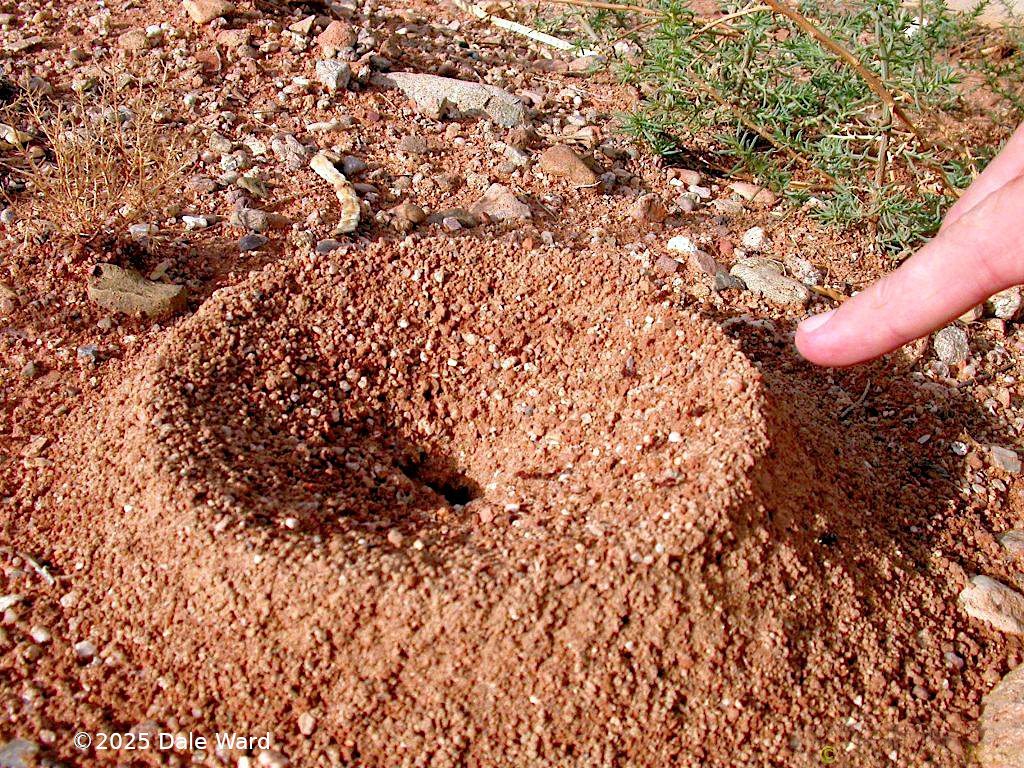 Small _Acromyrmex versicolor_ nest mound
Small _Acromyrmex versicolor_ nest mound
The ants either collect leaves, twigs and flowers off of the ground, or they will climb into the plants and use their jaws to snip off vegetation.
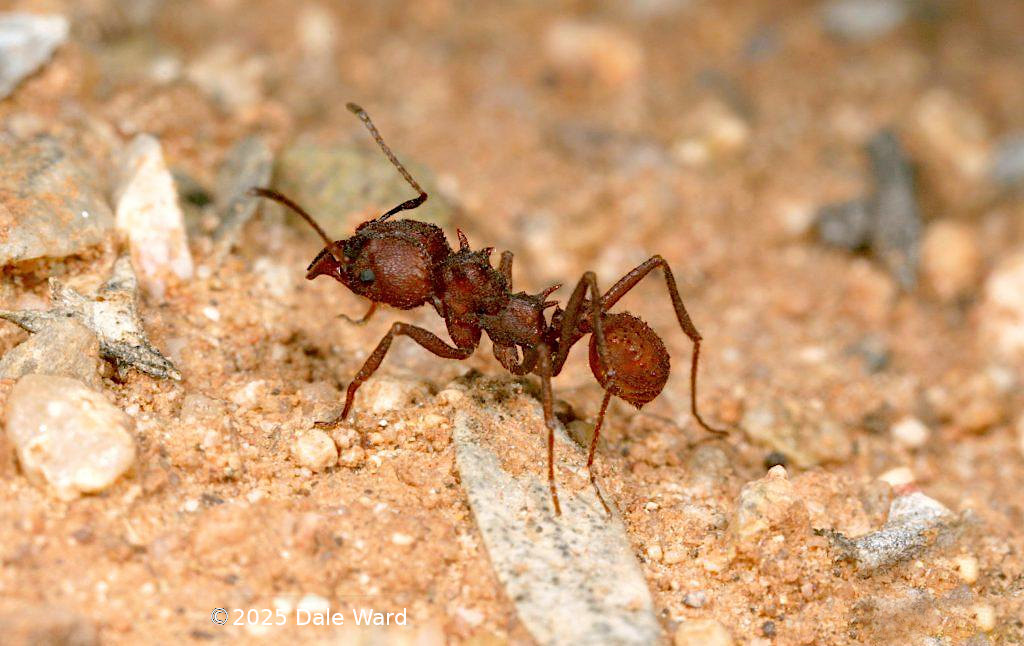 _Acromyrmex versicolor_ major worker
_Acromyrmex versicolor_ major worker
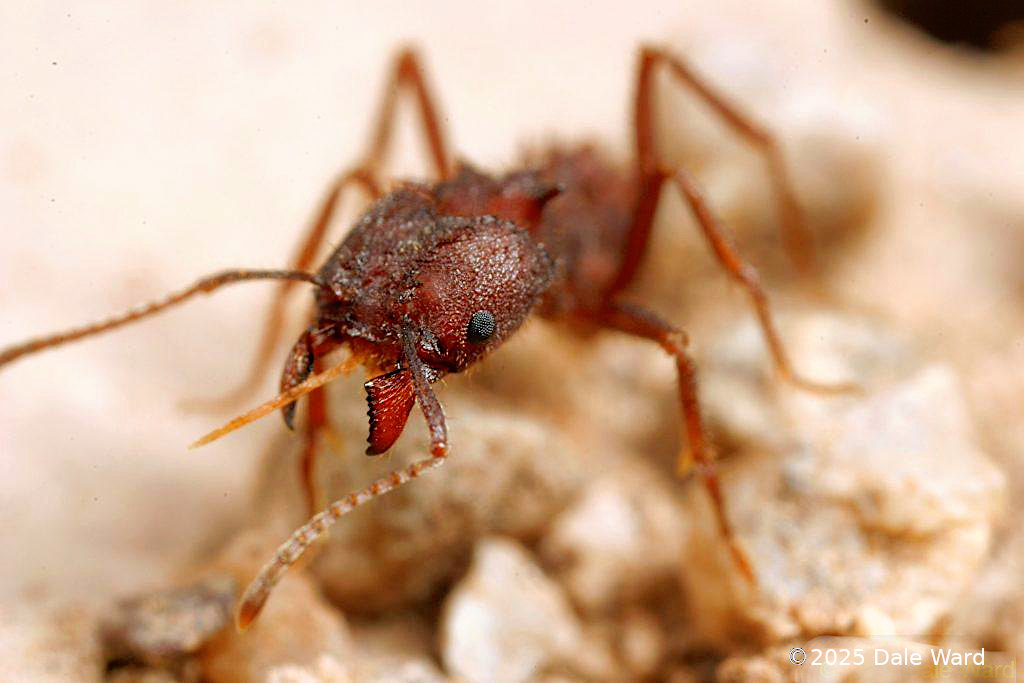 Frontal view of _Acromyrmex versicolor_ worker. The object projecting forward from between her mandibles is a piece of vegetation she was chewing.
Frontal view of _Acromyrmex versicolor_ worker. The object projecting forward from between her mandibles is a piece of vegetation she was chewing.
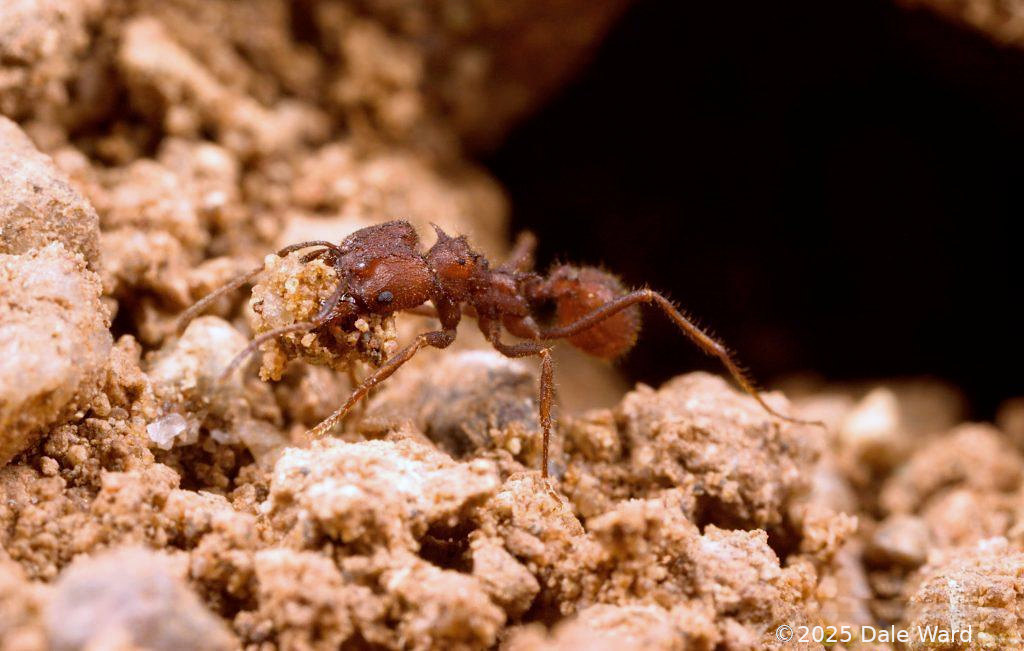 _Acromyrmex versicolor_ worker excavating dirt at the nest entrance
_Acromyrmex versicolor_ worker excavating dirt at the nest entrance
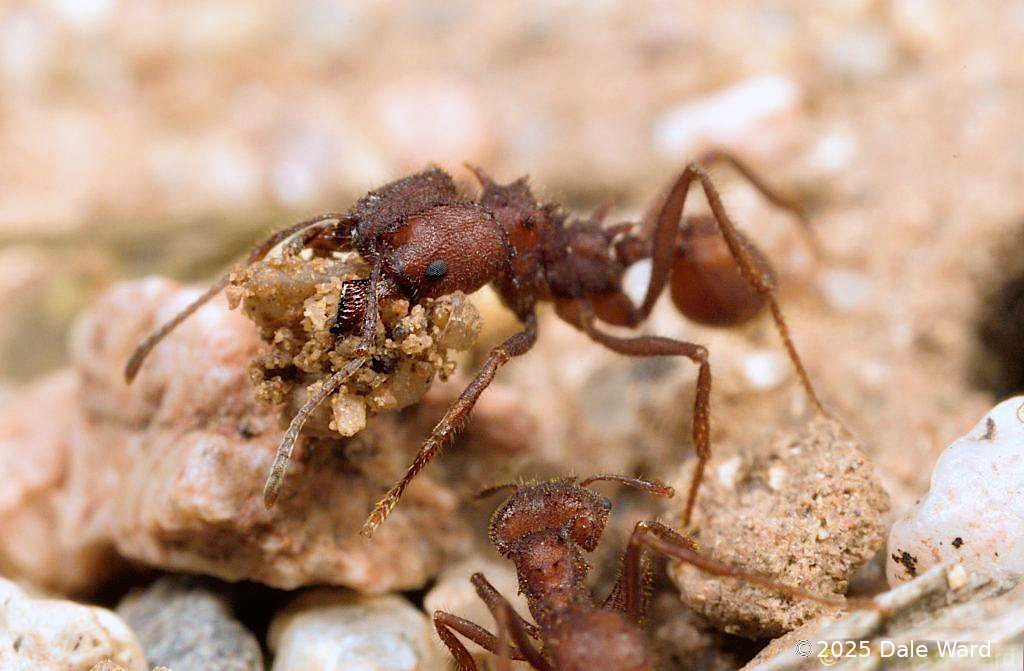 _Acromyrmex versicolor_ worker excavating dirt at the nest entrance
_Acromyrmex versicolor_ worker excavating dirt at the nest entrance
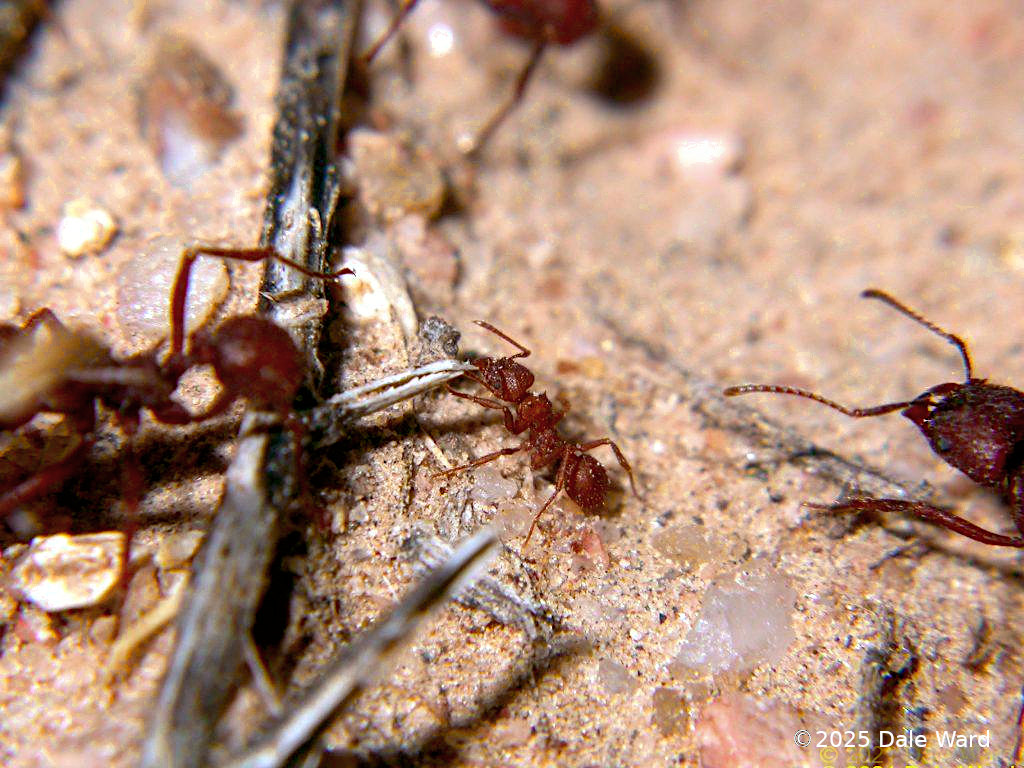 The size of _Acromyrmex versicolor_ varies within a nest. Here’s a minim, one of the smallest of the workers, surrounded by her larger sisters in a foraging column.
The size of _Acromyrmex versicolor_ varies within a nest. Here’s a minim, one of the smallest of the workers, surrounded by her larger sisters in a foraging column.
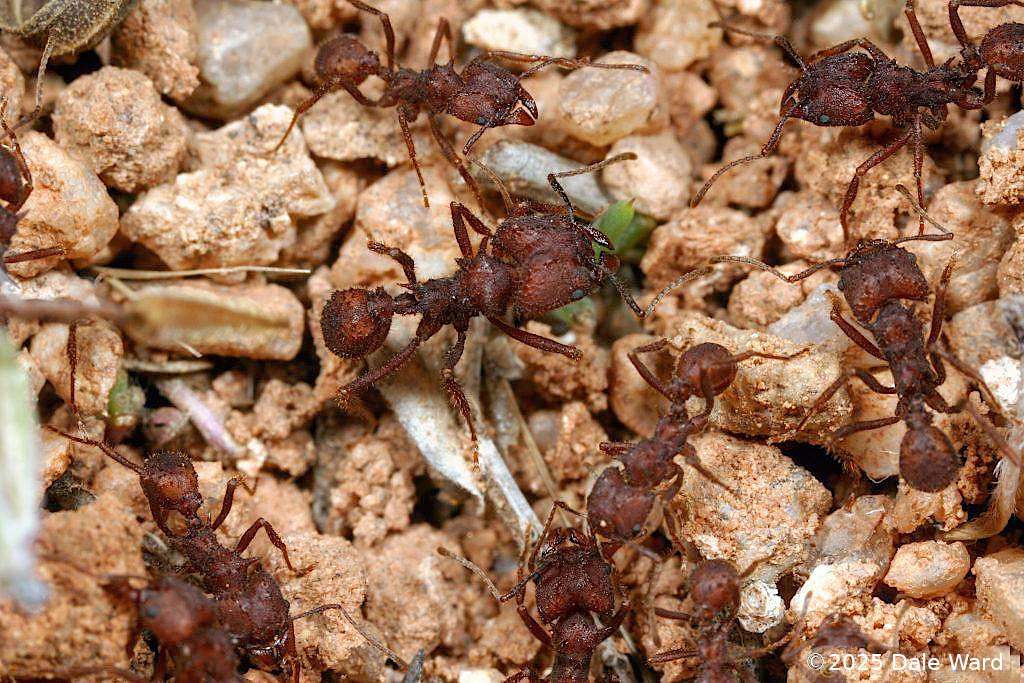 The size of _Acromyrmex versicolor_ varies within a nest. Here’s a major worker, surrounded by her smaller sisters.
The size of _Acromyrmex versicolor_ varies within a nest. Here’s a major worker, surrounded by her smaller sisters.
An interesting thing about a related South American species, Acromyrmex echinatior. Its exoskeleton incorporates “high magnesium calcite” crystals. These crystals toughen the ants’ exoskeleton, making them more resistant to the bites of other ants. Almost as if the ants have a suite of armour that’s reinforced with mineral crystals.
I would not be at all surprised to hear that Acromyrmex versicolor has something similar.
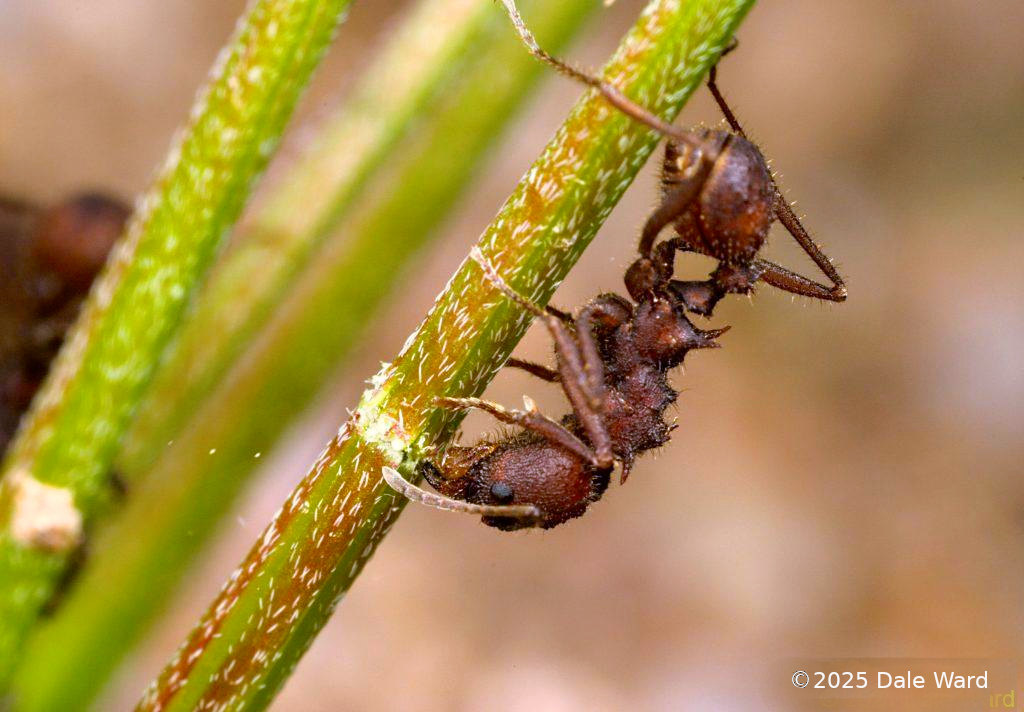 _Acromyrmex versicolor_ worker cutting stem. They are able to cut pretty tough/fibrous vegetation, as in this case.
_Acromyrmex versicolor_ worker cutting stem. They are able to cut pretty tough/fibrous vegetation, as in this case.
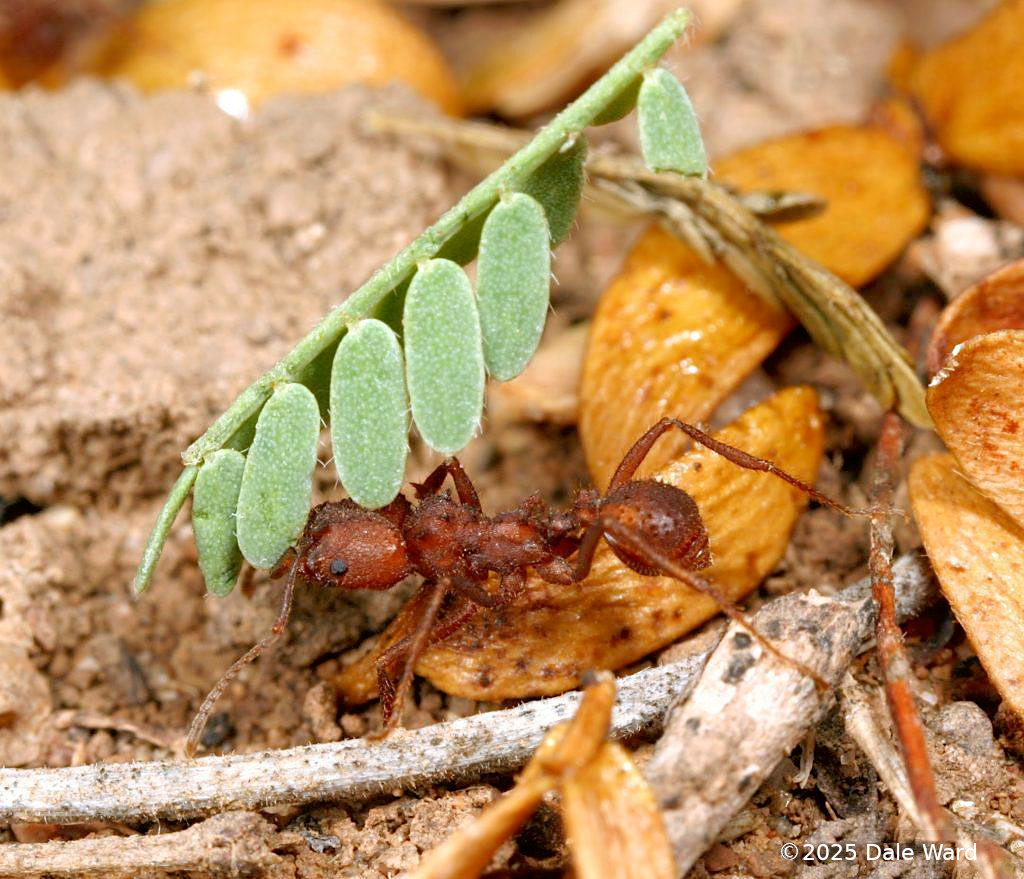 _Acromyrmex versicolor_ worker and mesquite leaf
_Acromyrmex versicolor_ worker and mesquite leaf
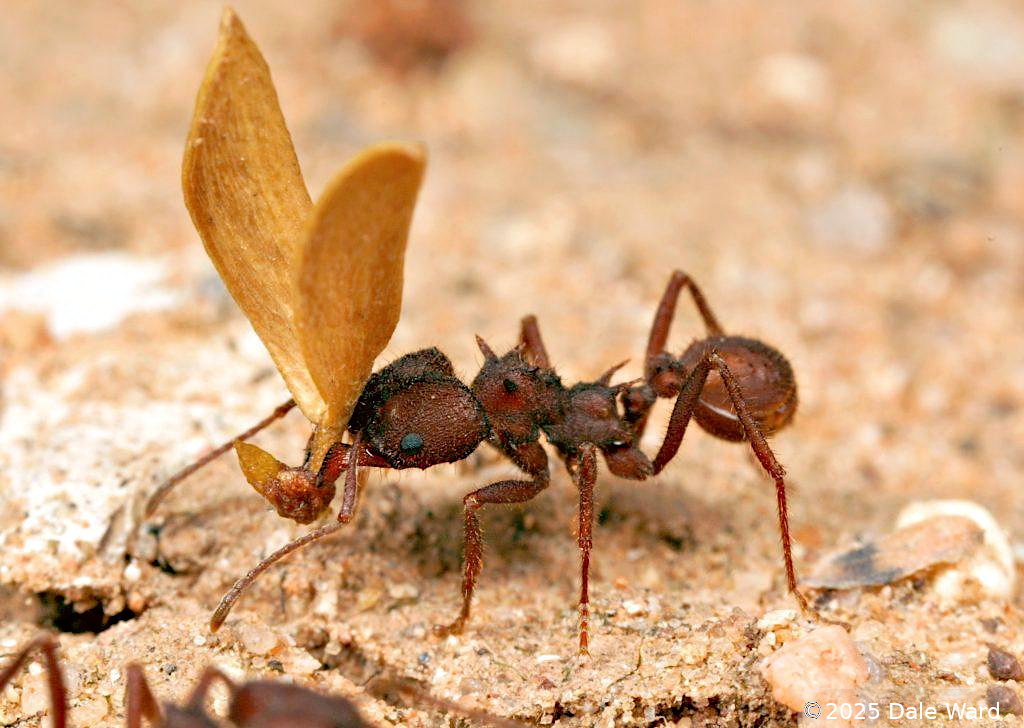 _Acromyrmex versicolor_ carrying leaflets back to the nest. Note that this is not a living leaf.
_Acromyrmex versicolor_ carrying leaflets back to the nest. Note that this is not a living leaf.
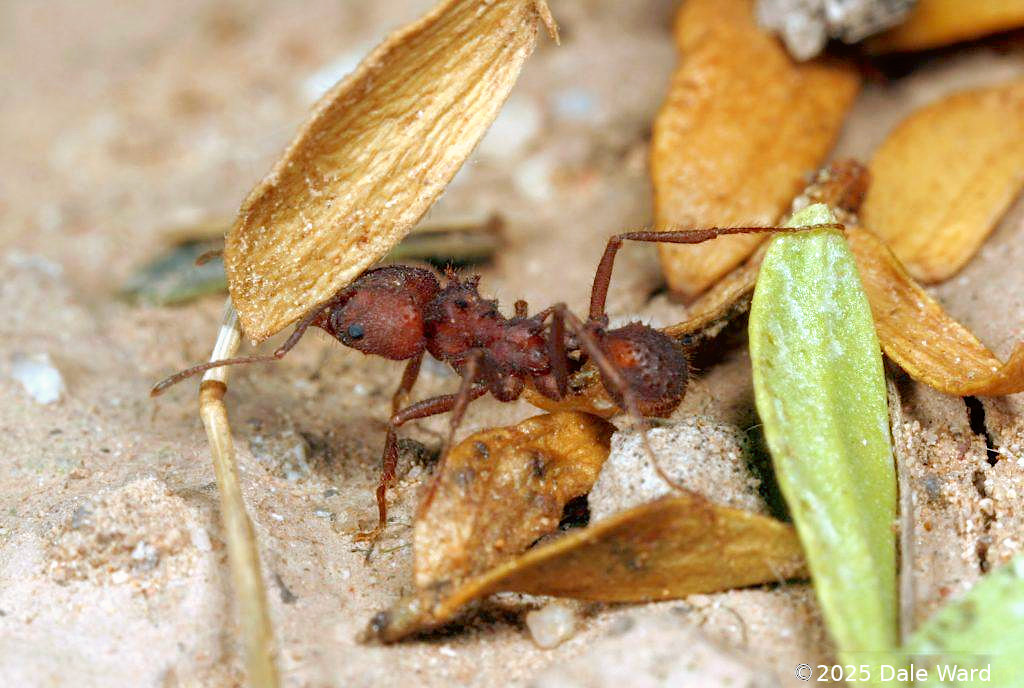 _Acromyrmex versicolor_ worker and leaflet. As you can see, the ants don’t always collect fresh, green leaves.
_Acromyrmex versicolor_ worker and leaflet. As you can see, the ants don’t always collect fresh, green leaves.
In spite of their spiny, fierce-some appearance, these ants are absolutely delightful. They move pretty slowly and deliberately are big enough to see easily, and usually have very sweet dispositions.
And best of all, they don’t sting.
Sources:
Li, H., Sun, CY., Fang, Y. et al. Biomineral armor in leaf-cutter ants. Nat Commun 11, 5792 (2020). https://doi.org/10.1038/s41467-020-19566-3